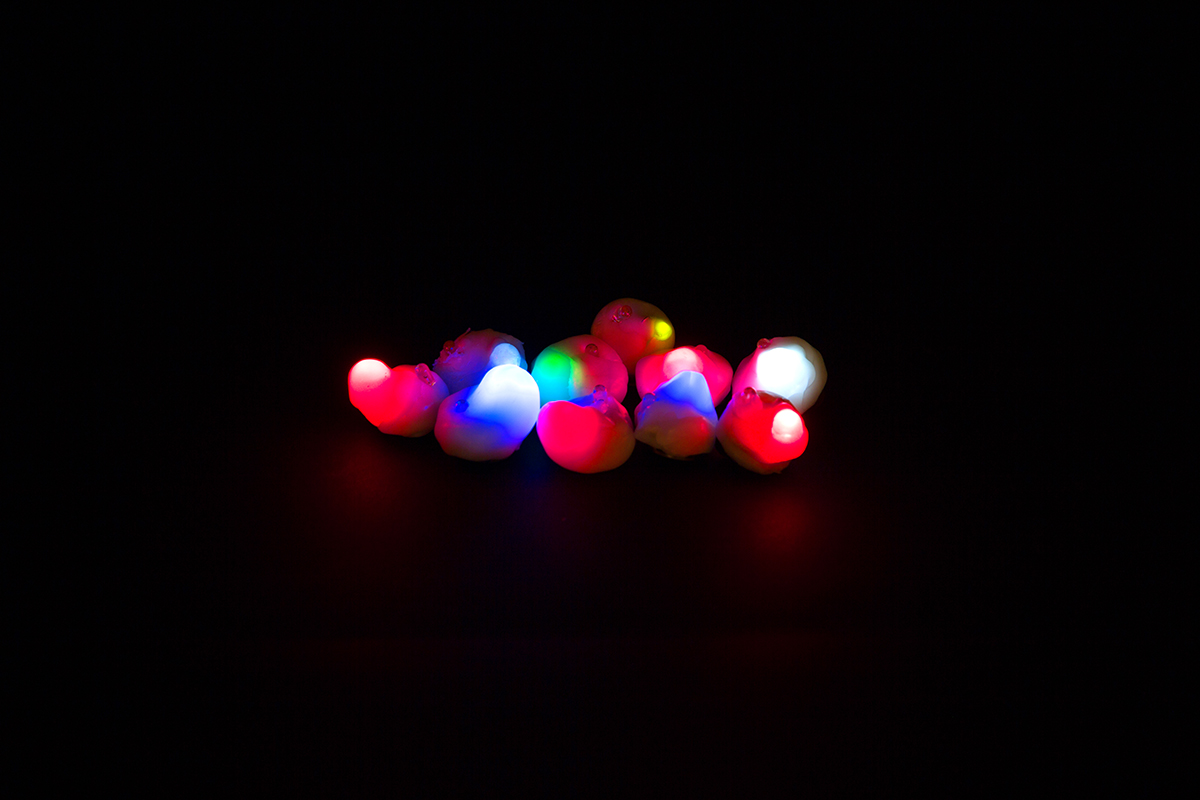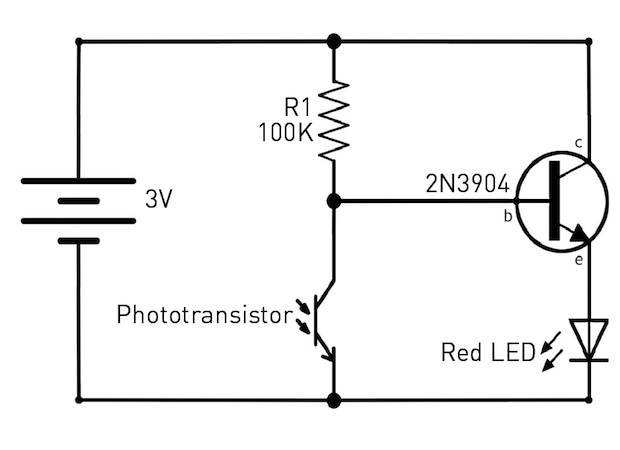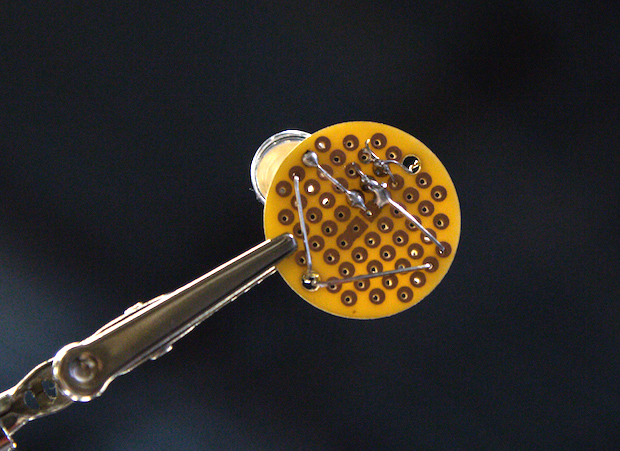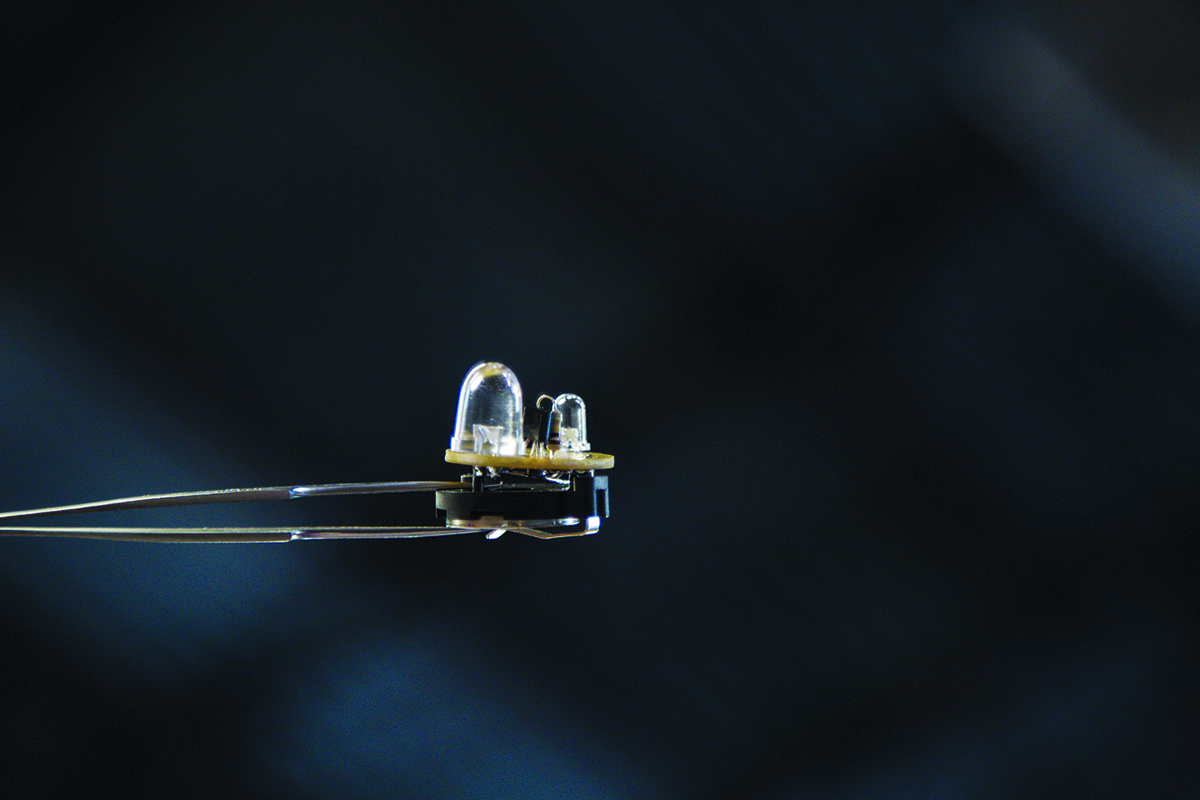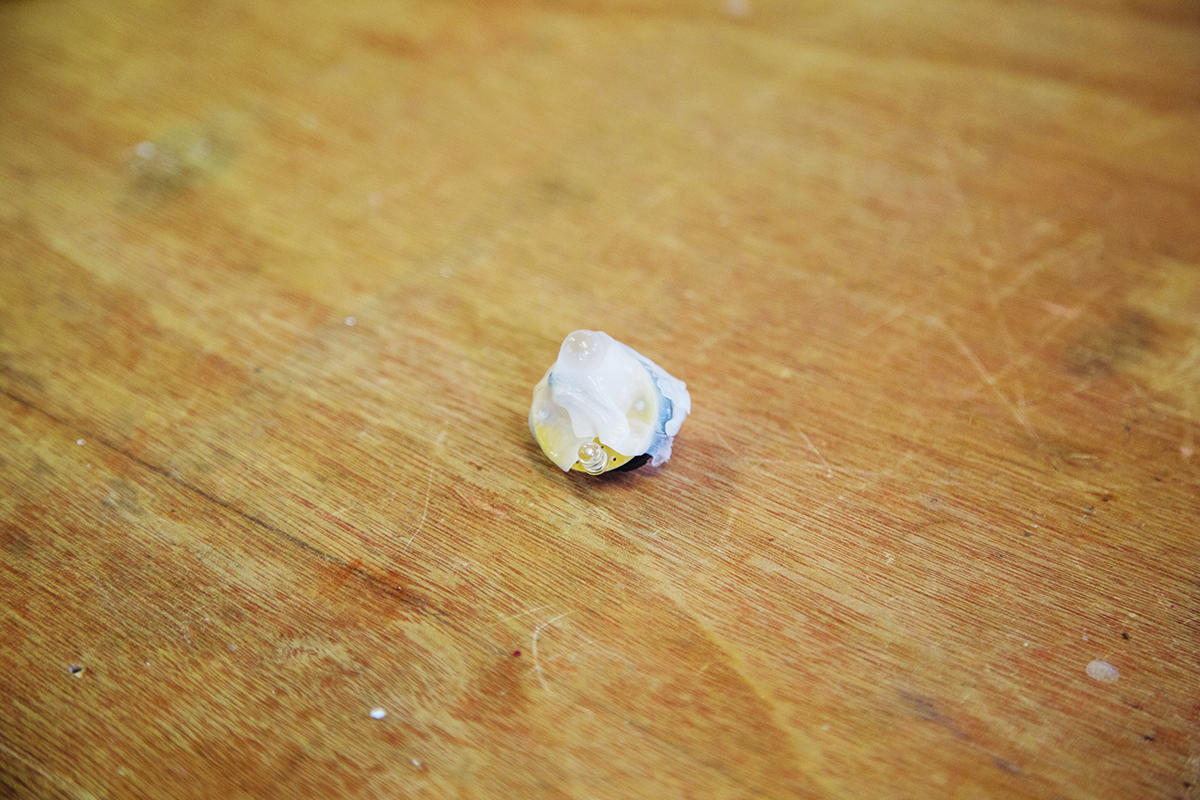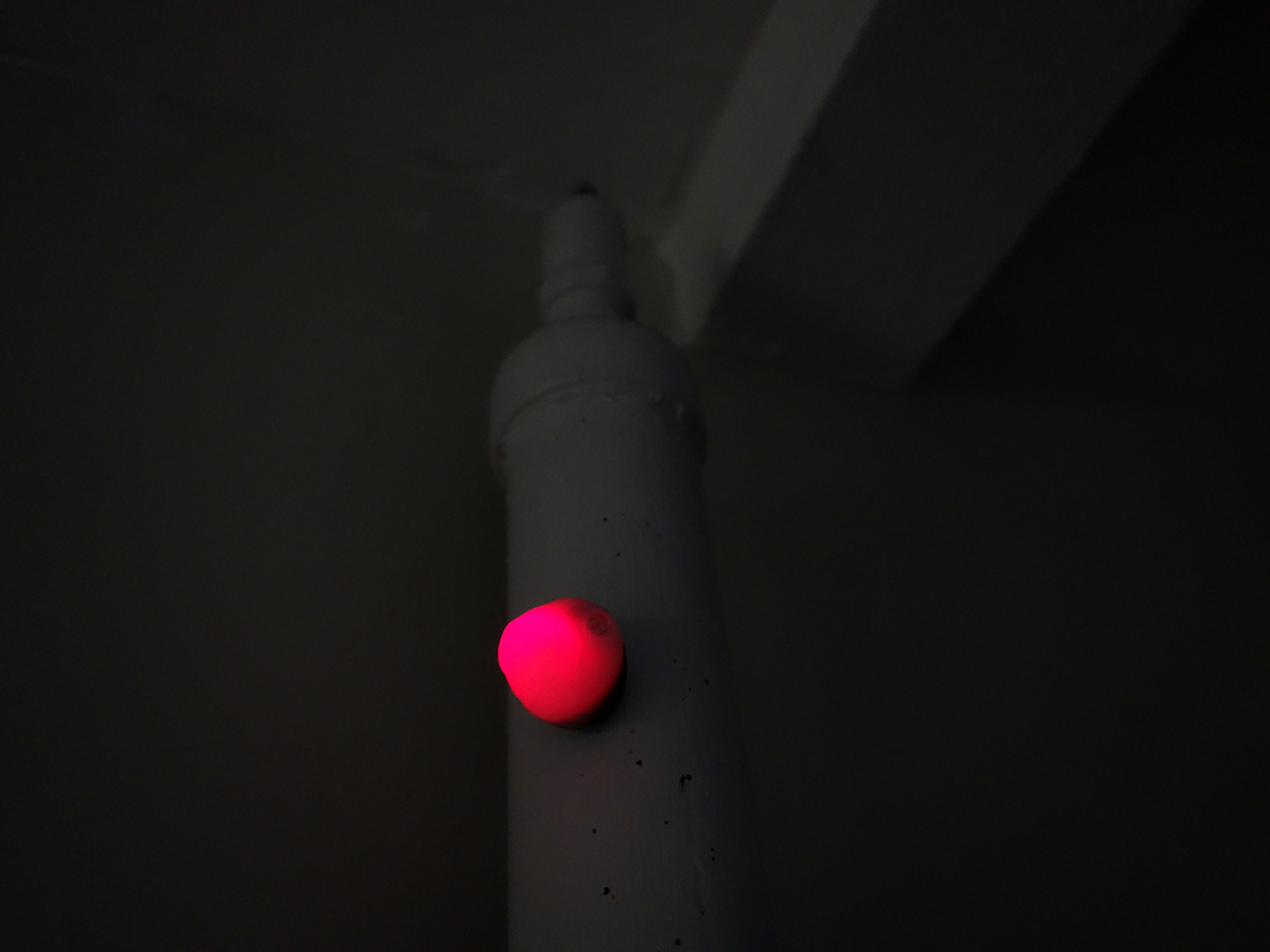
Much like outdoor and garden lights, the Dark-Detecting LED Throwie circuit switches on an LED when ambient light levels dip below a certain threshold. The big difference is the number of components: just five — a battery, phototransistor, resistor, LED, and transistor.
In this circuit, the transistor and LED are effectively switched off when photons (particles of light) hit the phototransistor. When few or no photons hit the phototransistor, current freely passes through the transistor’s collector-emitter junction, lighting up the LED.

This is a great project for beginners due to the small number of required components. For more experienced Makers, I recommend playing around with different LEDs and resistor values to add some variety.
For instance, you could choose a directional red LED in a clear package or a diffused one in a colored package. However, due to the differences in forward voltage (and other specifications) required by different types of LEDs, you’ll need to experiment with different resistor values if you stray from our prescribed list of project materials. You can’t simply replace the red LED with a blue or white one, but spend some time reading up on LEDs and Ohm’s law and you’ll be experimenting in no time!
Also, I recommend you first prototype on a breadboard to ensure your components operate properly. Plus doing so takes only a few minutes of time.



